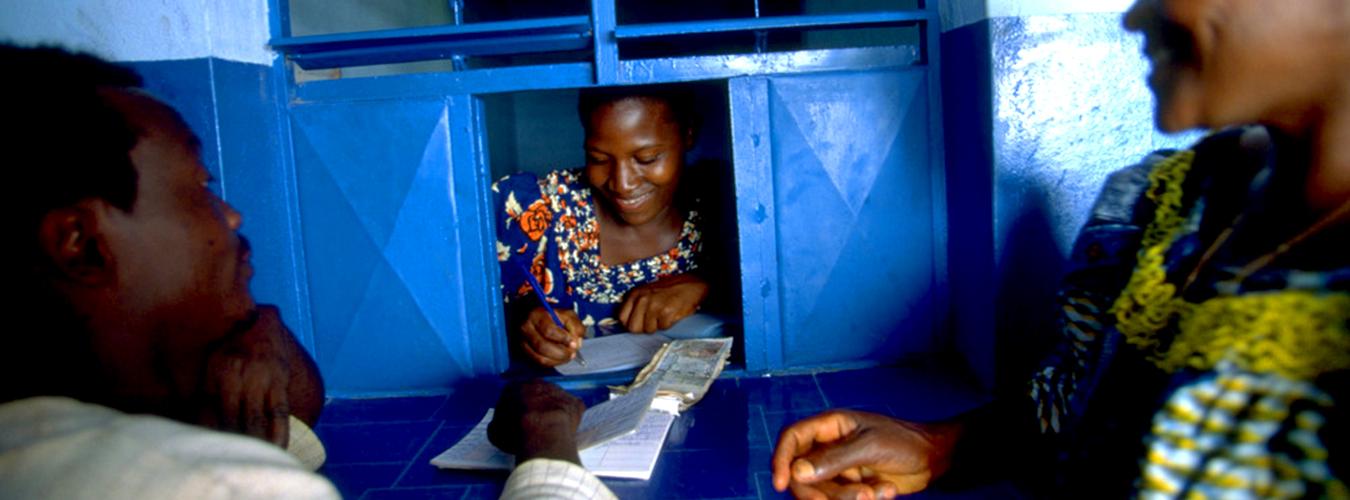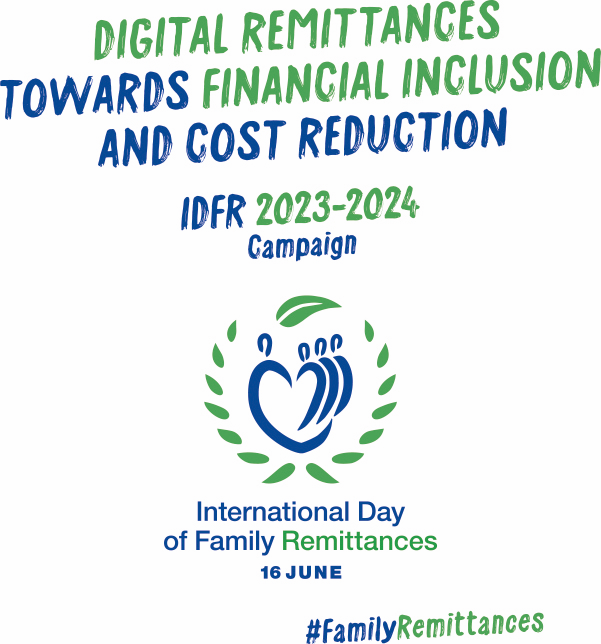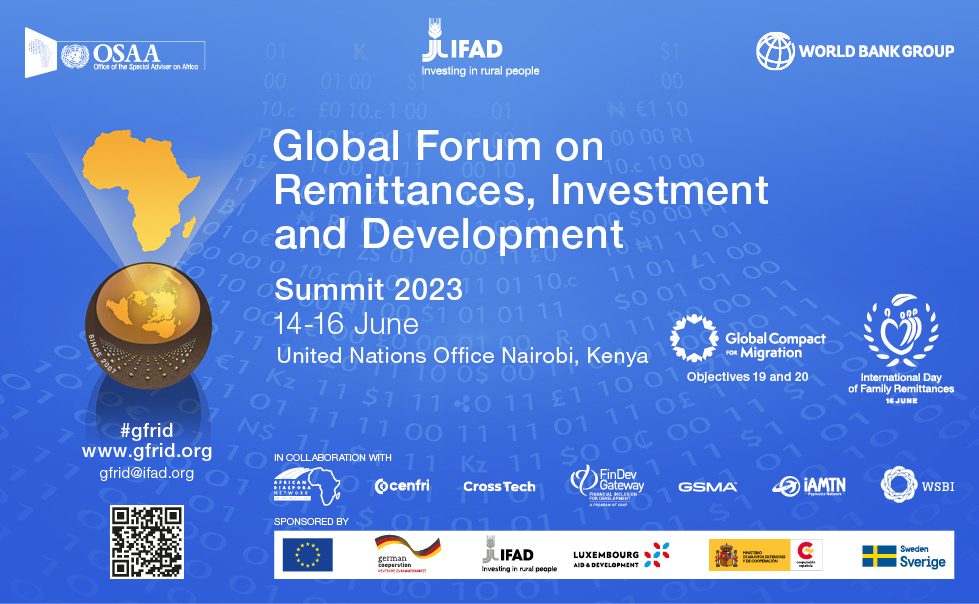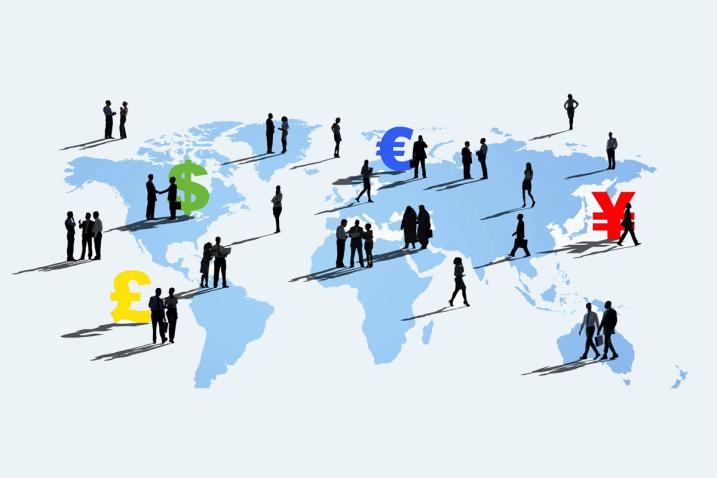
Digital remittances towards financial inclusion and cost reduction
This year’s observance theme focuses on the benefits that digital and financial inclusion bring when linked to remittances in helping remittance families achieve their own SDGs.
IFAD, as custodian of the IDFR, aims at ensuring support of the observance and dissemination of resulting actions in the framework of the decennial #FamilyRemittances Campaign 2020‑2030: Support one billion people reach their own SDGs. In that timeframe, through a spotlight on yearly themes aligned to the global development agenda, the campaign aims at strengthening and guiding stakeholders in focusing on the new trends and priorities that make remittances count more.
The IDFR 2023-24 campaign focuses on promoting digital technologies to enhance financial inclusion in LMICs, and to work towards achieving the cost reduction target of 3% as mentioned in SDG 10.c.
The IDFR and the United Nations commend the determination and resilience of the human spirit as evidenced by migrant workers. Further, the UN calls for governments, the private sector, development organizations and the civil society to promote digital and financial solutions for remittances that foster greater social and economic resilience and inclusion.
How to get involved
Share your practice!
- You can start by building your own social media package, drafting a thematic newsletter for your network or organizing an online event. Take part in the global discussion by using the hashtag #familyremittances.
- Think creatively on how you can bring this opportunity to the world’s attention. Use personal stories and compelling photos to illustrate the reality of the one billion people directly involved in remittance market and services\who have direct experience with the use of remittances.
- Take advantage of the IDFR official graphics on this Trello board following the logo guidelines.
Background
The International Day of Family Remittances (IDFR) is a universally-recognized observance adopted by the United Nations General Assembly and celebrated every year on 16 June. The Day recognizes the contribution of over 200 million migrants to improve the lives of their 800 million family members back home, and to create a future of hope for their children. Half of these flows go to rural areas, where poverty and hunger are concentrated, and where remittances count the most.
Through this observance, the United Nations aims to bring greater awareness of the impact that these contributions have on millions of households, but also on communities, countries, and entire regions. The Day also calls upon governments, private sector entities, as well as the civil society, to find ways that can maximize the impact of remittances through individual, and/or collective actions.
The IDFR is now fully recognized at the global level, and included as one of the a key initiatives to implement the Global Compact for Safe, Orderly and Regular Migration (Objective 20), also calling for the reduction of remittance transfer costs, and greater financial inclusion through remittances. The Day also promotes achievement of the Sustainable Development Goals (SDGs) and furthers the 2030 Agenda for Sustainable Development.
Remittance flows trends
In 2022, international remittances to low- and middle-income countries (LMICs) amounted to US$626 billion. Such average monthly transfers of US$200-US$300 sent by migrant workers support many basic household and prove transformational for both households and local communities, enabling many families to achieve their ‘own’ Sustainable Development Goals (SDGs).
However. the cost of transferring US$200 across international boundaries to LMICs is still high —averaging 6% in the second quarter of 2022. Mobile providers offer the best rates (3.5%), but less than 1% of transactions are made through digital channels. Remittance services are now much quicker and less expensive thanks to digital technologies.
For further information visit: familyRemittances.org and IFAD.

2023 Events

Within the framework of the Global Forum on Remittance, Investments and Development (GFRID) Summit 2023, hosted by IFAD, the UN Office of the Special Adviser for Africa and the World Bank from 14 to 16 June, this year’s observance will take place at the UN Office at Nairobi on the last Summit day, on Friday, 16 June.
The high level plenary will be followed by thematic sessions, focusing on the benefits that digital and financial inclusion bring when linked to remittances in helping 1 billion people achieve their own SDGs.
The IDFR and the United Nations commend the determination and resilience of the human spirit as evidenced by migrant workers. Further, the UN calls for governments, the private sector, development organizations and the civil society to promote digital and financial solutions for remittances that foster greater social and economic resilience and inclusion.
The Russian invasion of Ukraine has not only triggered large-scale humanitarian, migration, and refugee crises, it has also added downside risks to the global economy that is still dealing with the COVID-19 pandemic. The direct effects of a decline in remittance flows and the indirect effects of rising food, fuel, and fertilizer prices have increased the risks of food insecurity and rising poverty in many low-income countries.
Officially recorded remittance flows to low- and middle-income countries (LMICs) are expected to increase by 4.2 percent this year to reach $630 billion. This follows an almost record recovery of 8.6 percent in 2021, according to the World Bank’s latest Migration and Development Brief released today. Remittances to Ukraine, which is the largest recipient in Europe and Central Asia, are expected to rise by over 20 percent in 2022. However, remittance flows to many Central Asian countries, for which the main source is Russia, will likely fall dramatically.
International days and weeks are occasions to educate the public on issues of concern, to mobilize political will and resources to address global problems, and to celebrate and reinforce achievements of humanity. The existence of international days predates the establishment of the United Nations, but the UN has embraced them as a powerful advocacy tool. We also mark other UN observances




